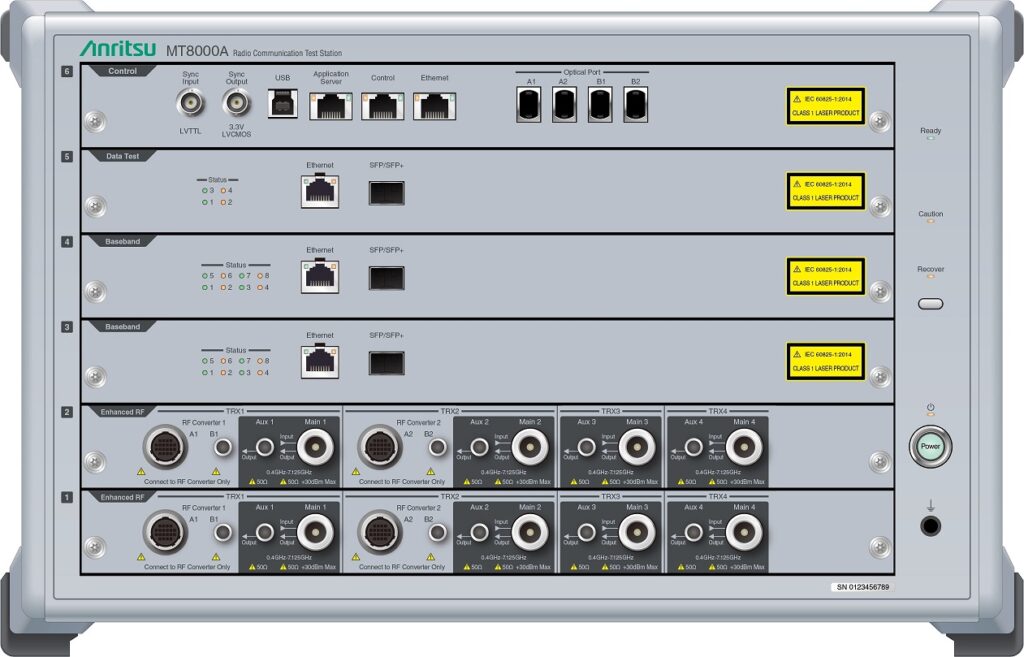ASIA ELECTRONICS INDUSTRYYOUR WINDOW TO SMART MANUFACTURING
Anritsu’s New Module for 5G Test Supports Expansion
Anritsu Corporation has developed MT8000A new radio frequency (RF) module for fifth-generation (5G) communications tester.
Consequently, the expansion of 5G deployment has made frequency bands to become scarce. As a result, the need to use unlicensed frequency bands and high frequency bands are gaining ground. Anritsu’s MT8000A-033 module expands test coverage of measuring instruments.

Emerging Options
MA8000A evaluates 5G communications protocol and RF performance. The 5G communications tester have been among chipset manufacturers and mobile communications carriers for testing smartphones and other mobile terminals.
The MA8000A can accommodate up to two RF modules. Equipping the tester with two MT8000A-033 RF modules enables it to incorporate up to 16 transmitters and eight receivers. Thus, it can support testing of the combination of various frequency bands.
5G testers at present suit Frequency Range 1 (FR1), alternately known as sub-6GHz frequency band. Aside from 5G, the 4G Long-Term Evolution (LTE) standard makes use of the sub-6GHz frequency band, making the available frequency bands scarcer.
For this reason, the use of unlicensed frequency bands called NR-Unlicensed (NR-U) of up to 7.125GHz emerges as a potential in the future. The new module covers 0.4 to 7.125GHz, which is the entire frequency bands in the FR1.

In Japan, commercial 5G services started in spring 2020. To introduce use cases that prompt further spread, the expansion of throughput is indispensable. To achieve this, there are emerging alternatives. These include carrier aggregation (CA) technology to increase communication speed by simultaneously using multiple frequency bandwidths. In addition, the 4×4 multiple input multiple output (MIMO) technology to transmit and receive data using four antennas each for transmission and reception.
MIMO requires multiple signal outputs for single component carrier (basic frequency block). In addition, the new module expands the function of MT8000A, enabling single MT8000A to have up to 16 RF outputs.
Support for Beyond 5G
In the future, the shift to standalone (SA) to use 5G New Radio (NR) only as an anchor to handle control signals without using LTE will prompt the use of higher order CA. Anritsu says, “We have developed the new module anticipating future needs.”
Eventually, the main communications networks will shift from LTE to 5G. To increase throughput, the use of full-fledged use of Frequency Range 2 (FR2), or the millimeter wave (mmWave) band, will become essential. Using the new module enables the construction of test environment to interconnect FR1 as an anchor and FR2.
The new module also enables the expansion of throughout at the up-link side by increasing the number of transmission and reception ports. Anritsu expects that it will contribute to the development of 5G-Advanced, the next standard beyond 5G, for which studies toward the standardization has begun.




